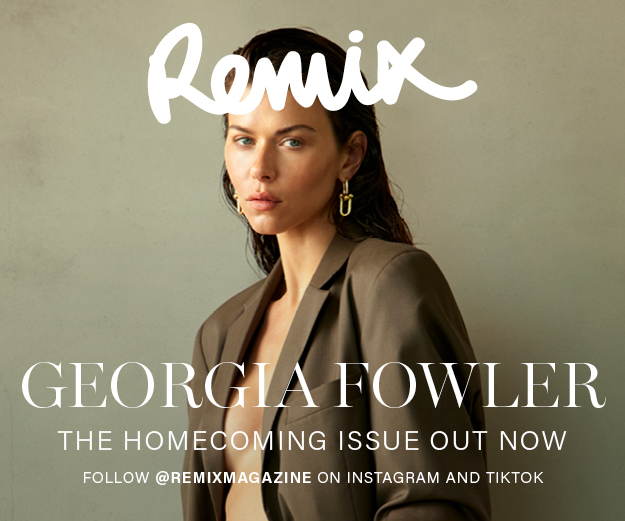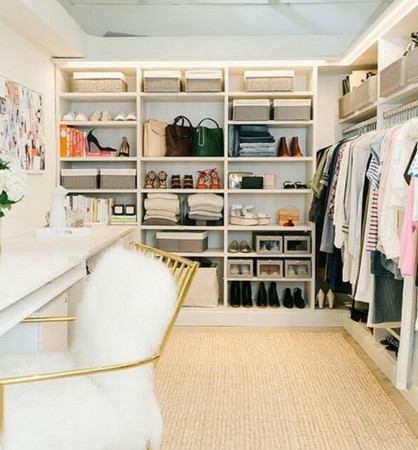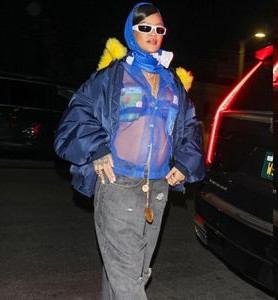Exclusive insights and conversations from Te Wiki Āhua O Aotearoa
Fashion in Aotearoa has never looked, or felt, quite like this. Āhua Underground Fashion Week is back, reclaiming the streets of Tāmaki Makaurau with a lineup that challenges the norms of beauty, style, and self-expression. Across three unique locations on Karangahape Road, designers, models, and creatives are pushing boundaries, transforming the city’s underground into a space for radical storytelling through fashion.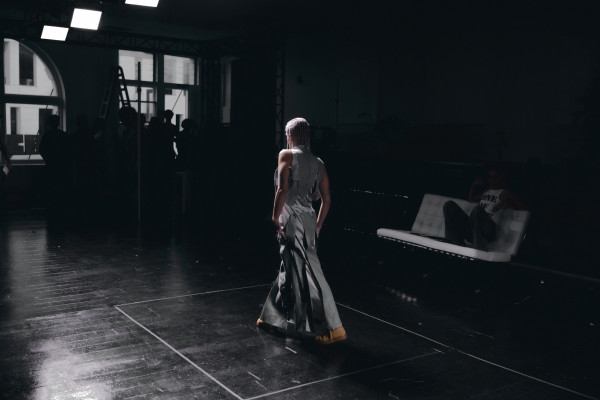
From wasteland-stripper aesthetics to androgynous streetwear, this year’s collections are more than just clothing - they’re statements of identity, culture, and defiance. Remix takes you behind the scenes to meet the models, designers, and creative minds who are shaping a fashion movement that’s anything but ordinary.
Ahead of a busy show week, we caught up with the founders of Āhua, Nina Bailey and Fifi (Sophia Kwon), along with other key members of their creative team, to discuss the vision and ambition behind the underground fashion week's second-year showcase.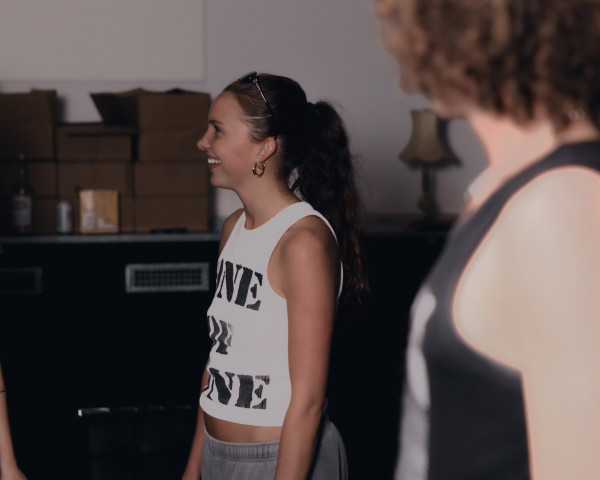
How are you expanding Āhua Aotearoa in 2025?
FIFI: 2024 was just the beginning. It was a place to feel what we could do and see what we were capable of. Our team has since expanded beyond our expectations. Last year we had three runways, one jewellery exhibit and one after-party. We now have a total of 17 events, including 11 runway shows, which consist of five group shows, five solo shows, and one signature show, along with a big after-party this Saturday. It's way bigger and we have lots of exciting plans for our next one in August….
NINA: We have almost 500 people involved with Āhua this year - from volunteers, models, designers, dancers and performers. We're so excited that we’ve been able to expand and grow.
Last September, the name Āhua became widely recognised. Can you share the origin of the name and its significance?
NINA: Fashion Week was cancelled last year, so we set out to create our own underground version. Around that time, several government ministers had imposed restrictions, instructing departments to avoid using Māori names and discouraging staff from incorporating te reo Māori and to communicate in English instead.
FIFI: This didn't sit right with us, so we knew that the show had to be in te reo Māori. Āhua means shape or form and it's a synonym for fashion, so we just thought it was a fitting name for our underground fashion week.
NINA: Te Wiki Āhua O Aotearoa translates to Aotearoa Fashion Week. We thought it was fitting to only name it what it should have been from the beginning.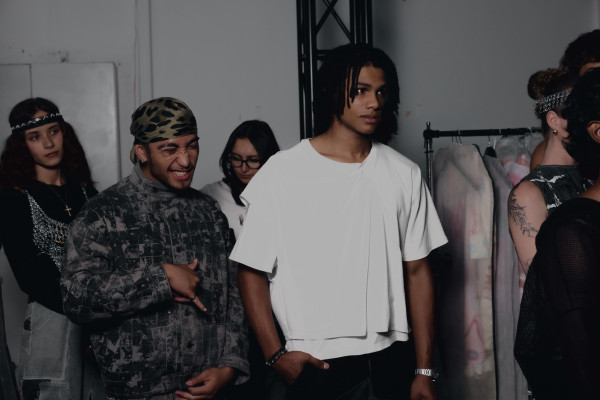
What has been the biggest challenge you’ve encountered while running Āhua this year?
NINA: Growing a team has been the most beautiful and exciting part, but personally becoming a leader and leading a team has been challenging for me - in the best way. I wouldn't say it's a negative challenge, it's been a positive one. It all comes down to the love of it and the mana. You have to have a lot of mana to do this mahi. If it was easy, everyone would do it and it's definitely not easy.
ROHANNA (Set designer): I would say a challenge would be budget, time and trying to find other people who want to help. We understand that people in our team can’t just drop everything for a week because they still need to pay rent and work their jobs. There’s so much prep before our shows and people can only do certain days so organising all of that and making sure that you have a big enough team to cover all bases is a lot of work.
JESSICA (Director of Hair & Makeup): A big challenge for me has been being the change that I want to see and being confident that I am implementing that change.
Can you walk us through the themes of each night in the current show? How do these themes reflect the show’s overall vision?
FIFI: Our overarching theme for the week reflects the reality that we grew up believing hard work guaranteed a future, but today’s world doesn’t offer that certainty. Many talented creatives, despite their qualifications, juggle multiple jobs just to get by.
NINA: It’s nearly impossible to sustain a creative career full-time. Most creatives I know work extra jobs just to pay rent, often getting trapped in corporate nine-to-five roles. Our theme is a form of protest and using fashion as a voice against these struggles.
Show Themes
Monday - Out of Service: A streetwear show symbolising the transition from youth to corporate life, held in a three-level convenience store. The fashion has evolved from casual streetwear to formal corporate looks.
Tuesday - Rot and Reverence: Inspired by post-apocalyptic themes, it explores the exhaustion from fast fashion and the beauty in decay, reflecting a shift towards sustainable and secondhand fashion.
Wednesday - Uncommon Thread: Showcases individuality as a form of escapism, evolving into the idea that self-expression can foster strong, connected communities.
Thursday - No Kingdom Come: A fairytale-inspired collection that starts whimsical but turns dark, representing the realisation that life isn’t always a happily-ever-after.
Friday - Tell Me I'm Pretty: A celebratory, club-inspired night that highlights community and the importance of connection as a form of escapism.
Saturday - Eat or Ate: A performance-art-driven finale featuring two signature looks from each designer (32 designers, 64 looks). It critiques the paradox of creative survival under capitalism, emphasising the tension between artistic expression and commercialisation.
In your opening statement, you boldly declare: “The system is broken. The promises that were made to us are no longer being kept”. What changes would you like to see in the system, and how does your work address these issues?
FIFI: The system that we’re in values products and commodifiable things over creativity. Yet, even in tough times, people still crave and create art - it’s a necessity.
NINA: I’d like to see more arts funding. Money is thrown around in many ways, but the arts are left behind. There’s little support for emerging talent, and even Āhua isn’t funded despite its impact.
JESSICA: Real change can only come from those at the top. People often say you have to play the game to change it, but we’re doing the opposite: changing the game by not playing it. It’s inspiring, and I’ve never seen anything like this before.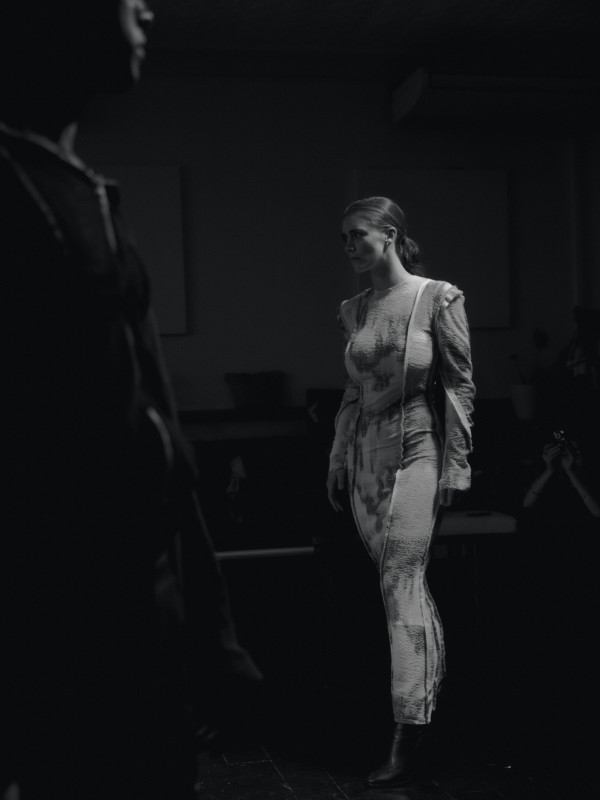
Have you seen any tangible changes in Aotearoa’s fashion landscape as a result of Āhua?
FIFI: Our generation was hindered by COVID-19 which meant we became adults wanting to enter the creative sphere, but lockdowns kept us in bubbles. Having a space where everyone can come together has been great for collaboration and networking.
ROHANNA: The network extends beyond just art and fashion. It connects creatives across disciplines, which benefits everyone in the long run.
JESSICA: At a base level, it’s a chance to see Auckland’s vernacular fashion and is a true reflection of the times from a grassroots perspective.
GRACE (Producer & Choreographer): Fashion is often isolated, you see a runway, and that’s it. However, Āhua is a space that embraces the kaupapa of inter-arts integration, not just fashion, creating a bridge between artists and allowing those connections to grow.
FIFI: We have so many talented creatives in Aotearoa… just go and see the show!
Get a glimpse into the creative minds of the designers shaping this year's Āhua show. From unique materials to powerful themes, these visionaries push the boundaries of fashion, blending personal expression with thought-provoking concepts.
Abby Santilan
Describe your collection in three words:
Bold, denim, streetwear.
What show are you designing for and how does the theme speak to your work?
I design streetwear clothing that has an androgynous vibe. My collection is going to be a part of ‘Rotten & Reverence’ on Tuesday night. The theme ties into my work as I love distressing fabrics. I love textures and working with different textiles.
What does being part of Āhua mean to you as a designer?
It means creating a community between us designers and getting to showcase our work for a greater cause. I like the community and the togetherness and showing what we love to do.
Billy Blamires
Describe your collection in three words:
Furry, messy, form.
You were a creative director and producer of Āhua last year and this year you’re designing, how does it feel for you to see the show expand in the way that it has?
It's pretty cool to see it expand. It's been fun to help build the platform and take a step back and realise I'm also a designer and I can use this platform in the same way that the other designers are. It's fun working with a new team of people, it has been cool seeing all of the new designers. The standard of design is unreal this year, which is very cool.
Can you walk us through your creative process, from concept to the final pieces on the runway?
In my collection, I look at the idea of spectacle and how often queer expression and clothing are seen as a spectacle. I want to make slightly more outrageous clothes more accessible and that it doesn’t need to be seen as something scary, weird, different or like a costume. How you express yourself is so valid and real because it's you as a person.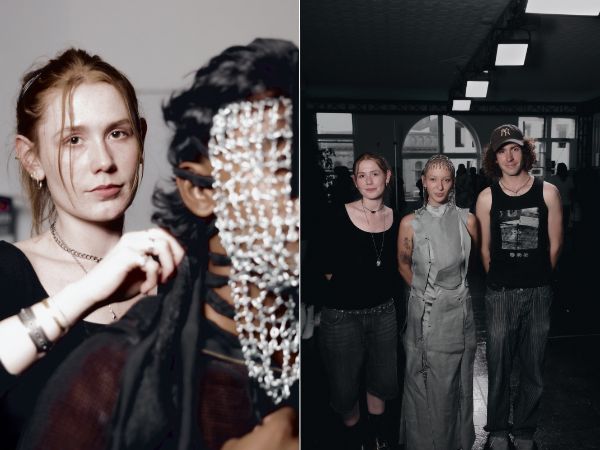
Finn Mora-Hill & Chloe Giles
What show are you designing for and how does the theme speak to your work?
FINN: I'm designing for In Over Our Heads, Fringes, and Ethereum.
CHLOE: I'm also designing for the same show.
FINN: The theme explores young professionals entering workspaces looking prepared but feeling the opposite. It captures the disconnect between graduation and reality.
CHLOE: It’s about putting on a front, pretending you know what you're doing. In my design, that’s expressed through materials, the facade of acting confident while still figuring things out.
FINN: When you dress up, you’re expected to embody the outfit. We’re exploring what happens when the outfit has its own personality, disconnected from you.
CHLOE: Clothing can change your persona. My masks in the collection highlight fashion as armour, shaping how you see yourself and how others perceive you. In intimidating spaces, what you wear can redefine how you're received.
How did you come into collaboration with each other?
FINN: I was given the opportunity to do a solo show for Āhua this year. After working on it for a few months, I met Chloe at last year’s after-party. I’d seen her jewellery, and we started discussing how to merge our materials. I work texturally, and the chains were a beautiful addition.
CHLOE: I studied Visual Arts and was drawn to Finn’s exploration of imposter syndrome and performativity in his garments, making collaboration a natural fit.
How has Āhua provided a platform for your work?
CHLOE: Before Āhua last September, I had never done a show or even participated in a photoshoot. Āhua gave me an incredible platform to showcase my work and say, “Hey, this is what I love! Does anyone like it?” Since then, it’s opened so many doors, allowing me to meet people, hold space for conversations, and explore collaborations. The constant meetings and connections make it a more accessible and pleasant experience compared to other fashion spaces, where work is often gate kept. It’s rare to see a designer’s work and actually meet them in the same space.
FINN: Āhua completely changed my life. I had done a few runways before, but after last year’s show, I met Nina, Fifi, and Billy, and we formed such close friendships - it feels like a family. Being brought onto the team to help produce other shows has been incredible.
Hine Mona
Describe your collection in three words:
Wasteland, stripper, sexy.
What show are you designing for and how does the theme speak to your work?
I'm the designer behind “Junes Cry” and my collection will be part of the ‘Rot & Reverence’ show. I'm someone who isn't a perfectionist and the whole ‘Rot & Reverence’ thing ties in perfectly with that. I embrace mistakes a lot. If something rips, I rip it more.
How has Āhua provided a platform for your work that other fashion spaces might not?
In other fashion spaces, you feel like you have to fit a certain standard, you have to be this or you have to be that. Whereas Āhua accepts you for you and they love indie designers. They see us for us and our uniqueness and I feel like that's what everyone here has.
Jessica Macrae (Director of Hair & Makeup)
Can you describe your artistry in three words?
Colour-theory, textural, weird.
Can you walk us through your creative process, from concept to the final pieces on the runway?
Something that stands out to me the most about clothing is silhouette and texture. So I like the makeup to mimic the silhouette and texture of the clothes that it's going with. For example,if there are feathers in a garment, I'd do crazy feather eyelashes.
What does it feel like returning to Āhua?
I would never want to be anywhere else, it genuinely keeps me going. It's really hard being a freelance makeup artist in New Zealand, especially in fashion because there's not much going on. I have to work a day job to be able to live. So being able to just do this and be in my element anytime I'm not on shift is just such an incredible opportunity.
How has Āhua provided a platform for your work?
The most valuable part about Āhua is that it’s a bunch of people in the same kind of age group and they're all passionate about the same thing. So you get to showcase every single part of yourself. Everyone has kind of left every part of themselves in the work for Āhua.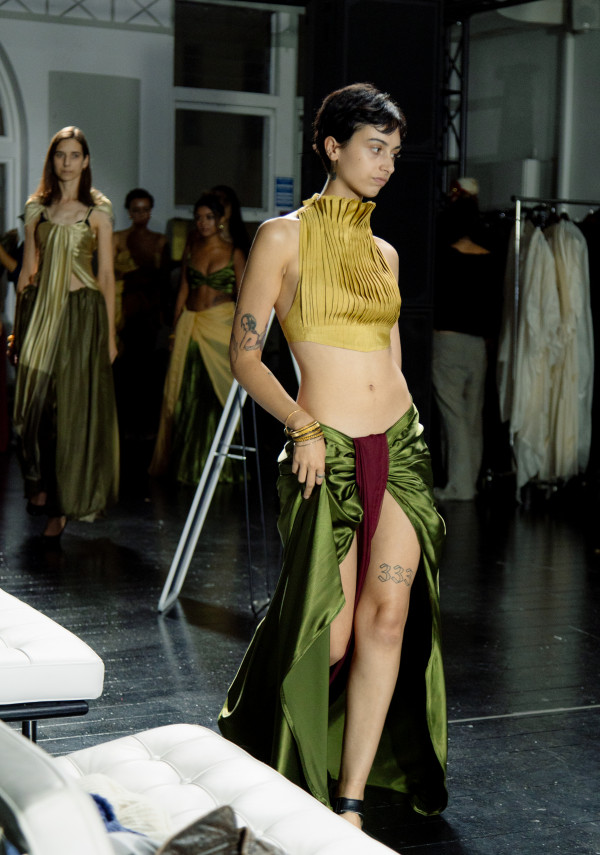
Nethasha Abeysinghe
Can you describe your collection in three words?
Sari, draping, pleating.
Can you walk us through your creative process, from concept to the final pieces on the runway?
I drape fabrics on the mannequin and let it do its thing. Improvisation is my way. 
Zee
Describe your collection in three words:
Unserious, playful, fruity.
Can you walk us through your creative process, from concept to the final pieces on the runway?
It all starts with spontaneity. I don't get the answer straight away but when I do, everything's surrounded by that one concept or thing. My collection revolves around literal fruits, I've made fruit plushies and my entire collection is just surrounded by fruits.
What has been your proudest moment in your journey as a designer so far?
Working with people has been my proudest moment. I mean, it’s the final result as well but it's mainly the people that have been with me from the initial conception until the end when the models are walking down the runway. I'm proud that I'm able to share these moments with other people.
From returning faces to fresh talent, meet the models who are stepping into the spotlight at this year’s Āhua Fashion Week.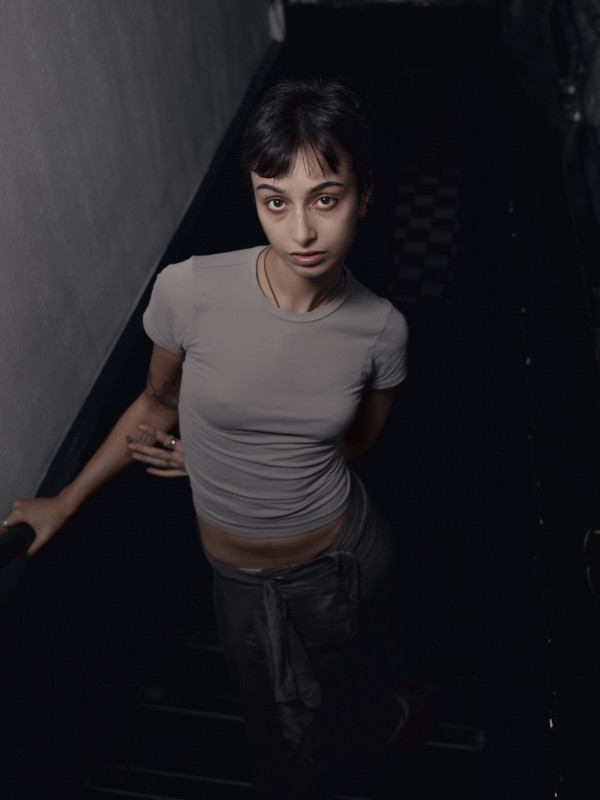
Acacia Flewitt
What designer are you most excited to walk for?
Giulia, her designer name is Ziglani. It’s super cool sheer boho vibes and I really like that. 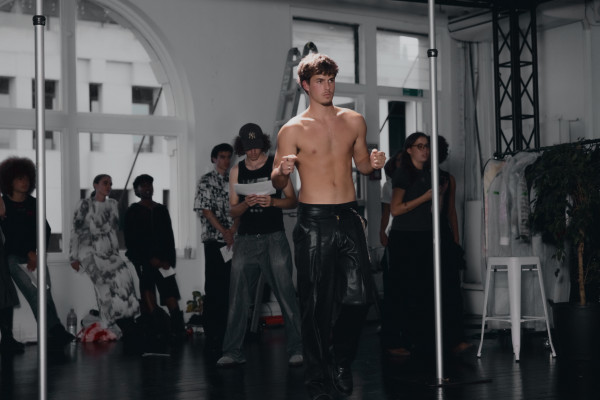
Elijah Michael Nazzer
How did you get involved in Āhua?
I went onto their Instagram and saw that they were doing a casting and I just thought this would be really fun to do. I've wanted to get into modelling for a bit and it's been great so far.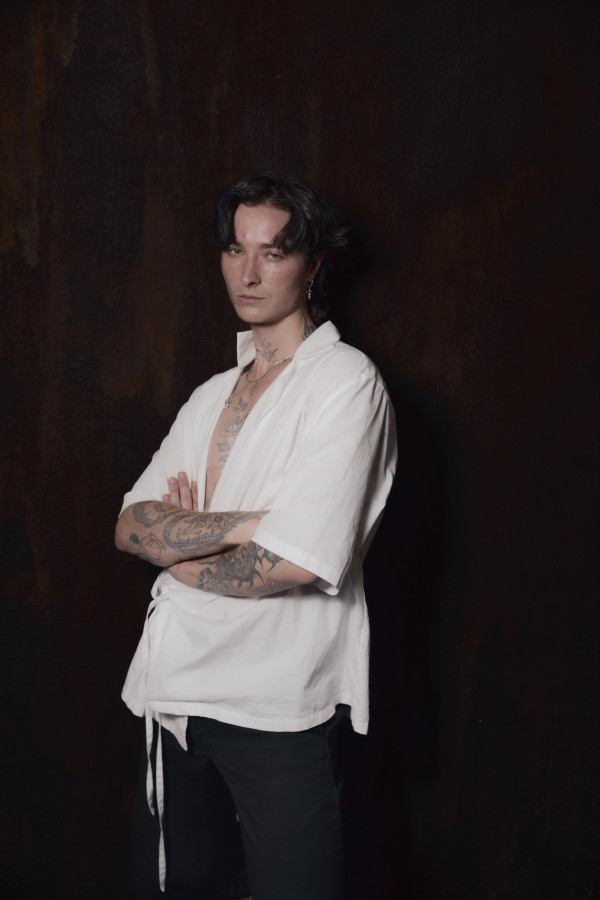
Finn Hunter
Āhua is about more than just fashion, it’s about reclaiming space and identity. What does it mean to you to be part of this movement?
When you’re an artist, things can start to feel very insular so Āhua creating a space where people can come together and collaborate is way more meaningful than just creating on your own and posting it online. It’s about creating a sense of community. I think it’s imperative to be able to come together and meet and share ideas and collaborate especially for queer folks like myself who are gender non-conforming.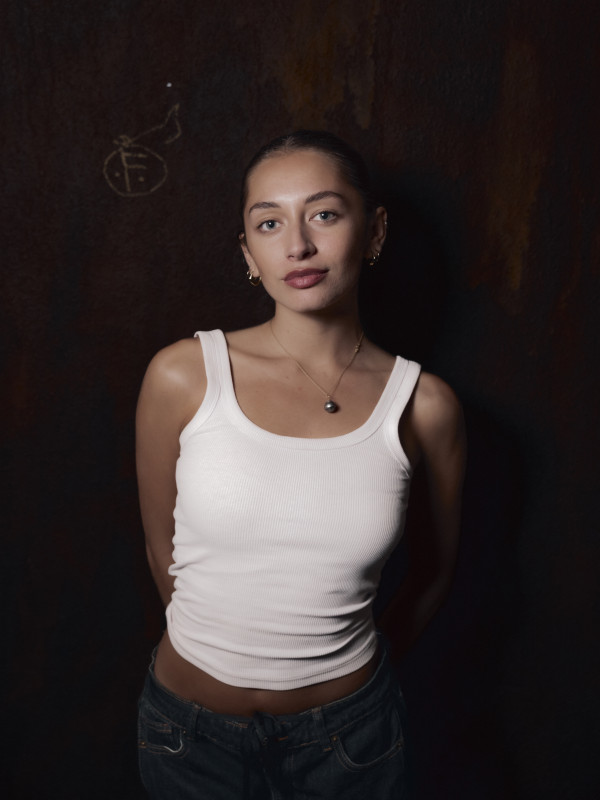
Georgia Payne
How did you get involved in Āhua?
I did the last one and I loved it.I was intrigued to see what an underground fashion show looked like and it was super cool. I got recast this year, so here I am again.
Do you have any pre-show rituals to get into the right mindset?
I actually just disassociate as much as I can. Otherwise, I get all awkward and nervous!
Indi-Drea Clarke-Ashton
Do you have any pre-show rituals to get into the right mindset?
Putting on some lip liner gets me into my mood! Then being in my own space and thinking about my walk. Everyone is here to look their best and make their clothes look the best, so I like to be in my own bubble before I go on the runway.
What designer are you most excited to walk for?
The one that feels the most ‘me’ would be Fringes. It's such a badass collection and everyone looks so fearless, which I love. I love how you can feel the attitude on the runway.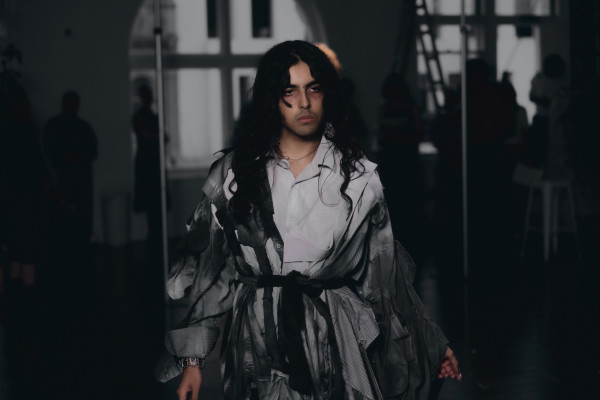
Kalaakaar Sharma
Āhua is about more than just fashion, it’s about reclaiming space and identity. What does it mean to you to be part of this movement?
Auckland is such a diverse city, there’s so much more going on than people seem to realise and so I love being part of that, and spotlight the creativity of our city.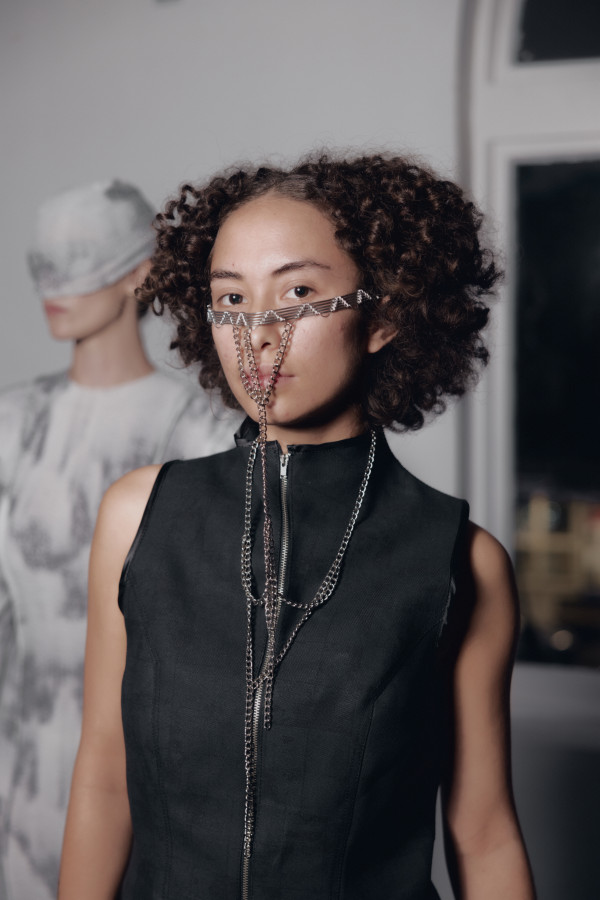
Manaia Judd
Āhua is about more than just fashion, it’s about reclaiming space and identity. What does it mean to you to be part of this movement?
It means a lot because nowadays the fashion industry feels very exclusive, so I love being part of a show where everyone is passionate about the designs and the artistry. It's not just about the money, it's about the vision and the art.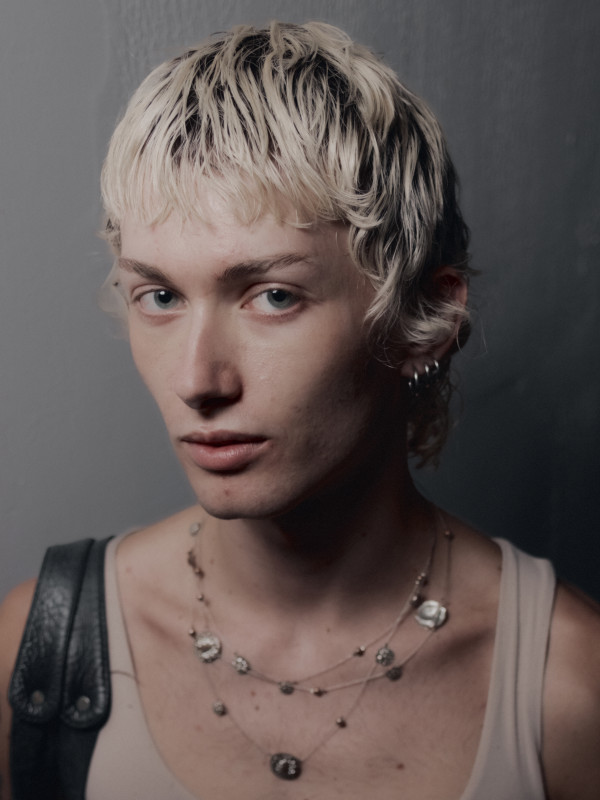
Venus Blacklaws
Āhua is about more than just fashion, it’s about reclaiming space and identity. What does it mean to you to be part of this movement?
It's nice to see something that's fresh and is pulling people from a lot of different pockets of our city. I feel that we don't often have those kinds of things, and it's cool to platform these people and these identities in the space as a non-binary presenting person, I’m grateful to be amongst all my peers.
Photography by Willow Handy and Camden Jackson


